

Gassan Sadakazu Wakizashi
SS0483
NO LONGER AVAIABLE
An ubu wakizashi signed, Teishitsu Gigei In (member of the imperial family arts) Gassan Sadakazu nanajuO Saikinsaku [Kakihan] / Taisho gennen hachigatsu kichijitsu (a fortunate day in August 1912). Hirazukure iroi mune. Horimono: fitatsubi with vajra hilt base and yari with flowing banner. Hawatare: 1. shaku 4 bu (31.51 cm / 12.4"). Motohaba: 2..728 cm. Kasane: 6.48 mm Notare midare, ha nie. Boshi is pointed with a longish kaeri. Tight itame hada. Ref, Nihon Toko Jiten - Shinto-hen, Jojosaku. Toko Taikan rated at 5,500,000 yen. Shishinto Taikan, pages 107 - 124
Since he was born in 1836, in Taisho gennen he would have been 76 or 77. Because the remnant of the kanji looks like the bottom of nana, I would say this is a work made at 77.
Surds of later Edo were known as fukko-to.
Sadakazu was born on November 1836, in Omi province with the family name of Tsukamoto. At the age of seven, he was adoptedby the Osaka swordsmith, Gassan Sadayoshi. Dated work start at 1850, when he was fourteen years old. He went on to become one of the preeminent swordsmiths of the Meiji era. Despite the Haito-rei, March 8, 1876, banning the wearing of swords, of wearing swords, Sadakazu continued in his craft, focusing on military commissions. In 1906 he was appointed Teishitsu-gigeiin (member of the imperial handicrafts), a forerunner to Ningenkokuho (living national treasure). He was considered one of the greatest horimono carvers of his time.
In 1869, Sadakazu forged two swords for the Emporor Meiji. He forged a sword for dedication to the Hiraoka Shrine in 1874. By Imperial Command in 1885, he gave a display at the Minatogawa Shrine in Kobe in the presence of the Emperor. During his visit to Japan, the Duke of Connaughi was presented a Sadakazu sword.
The time-honoured kotō Gassan school was taken-up again in the shinshintō times by Sadachika (貞近). Sadachika, his civilian name was „kuyama Yasaburō (奥山弥三郎), was born in Meiwa eight (明和) 1771 in Sasagawa (笹川) in the Nishimurayama district (西村山郡) of Dewa province. It is said that he was a descendant of the Gassan lineage and he died on the 19th day of the fifth month of Kaei four (嘉永, 1851) at the age of 81. But the actual revival of the school has to be attributed to Sadachika´s son Gassan Yahachirō (月山弥八郎), who adopted the name "Gassan" as his family name and who signed "Sadayoshi" (貞吉). Some old transmissions say that Sadayoshi was born in the first year of Tenmei (天明), 1781 and died on the 19th day of the second month of Meiji three (1870) at the age of 90. But in Tenmei one his father Sadachika was only ten years old and so another transmission is much more likely, namely that he died in 1870, not at the age of 90 but 71. This, in turn, calculates his year of birth as Kansei two (寛政) 1800. However, Sadayoshi left Dewa in the early years of the Bunsei era (文政), 1818-1830 and went to Edo to study under Suishinshi Masahide. After that, i.e. in Tenpō four (天保), 1833, he moved to Ōsaka where he laid the foundation for the more recent success story of the Gassan school. We know blades from Sadayoshi from the Bunsei to the end of the Keiōera (慶応), 1865-1868. His jihada is the typical Gassan ayasugi, a masame in the Yamato tradition, or a dense mokume. The hamon is either a suguha in nie-deki, a small-dimensioned chōji-midare, or a koshi-no-hiraita midare. It is said that his adopted son Sadakazu made several daisaku-daimei works for him in his later years.
Sadakazu (貞一), who bore the civilian name „Gassan Yagorō (月山弥五郎), was born in the second month of Tenpō seven (天保), 1836 in the village of Sugoshi (須越) in the Inugami district (犬上) of Ōmi province. He was adopted by Sadayoshi at the age of seven. In Meiji 39 (明治, 1906) he was appointed teishitsu-gigei´in (帝室技芸員), lit. Member of the Imperial Arts and Crafts, the equivalent to the later title of Living National Treasure. He and Miyamoto Kanenori (宮本包則) were the only swordsmiths awarded with this honor. The teishitsu-gigei´in program was founded by the Meiji government in 1890 to preserve the traditional arts and crafts.
Sadakazu´s gō were Kōkensai (光顕斎), nryūhi (雲龍子) and uiyūhi (水勇子). He died on July 11th 1918 at the age of 84 and we know from him dated blades from the third year of Kaei (嘉永) 1850 when he was only 15 years old at that time to his year of death in 1918. That means he was active as swordsmith for about 70 years. He mastered all traditions and is regarded, besides Honjō Yoshitane (本荘義胤) and Kurihara Nobuhide (栗原信秀), as the greatest horimono engraver of the shinshintō times. Some suggest Suishinshi Masahide as the founder and Gassan Sadakazu as the last great master of the shinshintō. Sadakazu also played an important role in passing-on the craft to the subsequent gendaitō swordsmiths. His blades have a rather long nagasa, a shallow sori, a wide mihaba, and a chū or an ō-kissaki, altogether a magnificent and grand shape. but he also made some blades with a sugata in the style of the early Muromachi period. Incidentally, blades made in the Keiōera (慶応), 1865-1868 are especially impressive. He also made many copies of kotō works and worked for the military after the sword ban where more slender and shorter blades were needed. He forged the traditional ayasugi-hada of the Gassan school, a masame in the Yamato tradition, a mokume, a kokume and also an itame. According to the tradition he worked in, he tempered an elaborate chōji-midare in nioi-deki with a narrow yakihaba and long ashi in the style of the Ōei-Bizen school (応永備前), a ko-chōji-midare in ko-nie-deki, a chū-suguha-hotsure in the style of the Yamashiro tradition, or a gunome-midare with thick nie and nioi and plenty of hataraki in the style of the Sōshū tradition. The bōshi shows a roundish kaeri or runs out as yakitsume. He applied many different horimono like dragons, dragon and plum branches, kenmaki-ryū, waterfalls, Fudō-Myōō, bonji and the like. All of them are finely engraved and some remind us of carvings by Ikkanshi Tadatsuna (一竿子忠綱). Sadakazu´s blades show a long and carefully finished tang with a kurijiri and sujikai-yasurime with keshōwhereas each file stroke is exactly applied. During the Keiōand Meiji era he added a characteristic koku´in (see picture 90), and in the fifth year of Taishō (1916) he forged a tachi on the occasion of the enthronement of emperor Yoshihito (嘉仁), 1879-1926.
*Gassan School information: Courtesy - Markus Sesko (Author), E Nihon-shinshintō-shi (pages 124-125)
$10,000




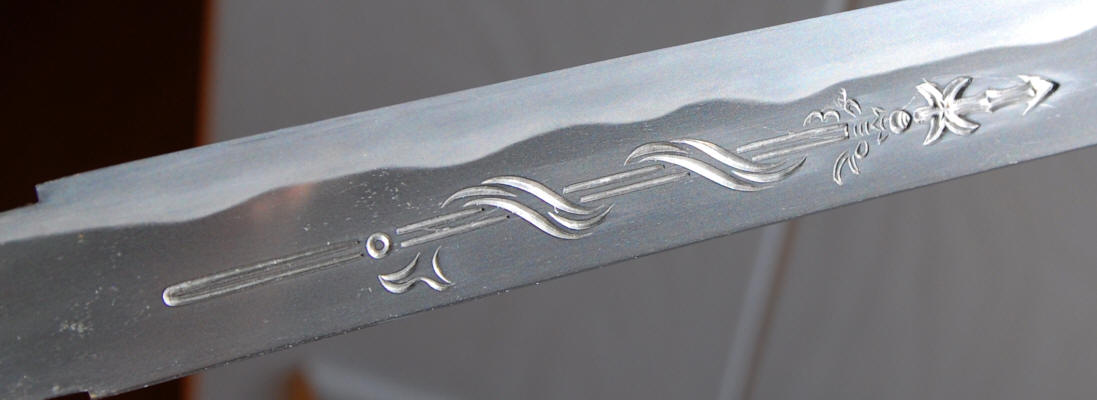


Gassan Sadakazu Nana ju (nana) Saikinaku [Kakihan] / Taisho Gennen Hachi Gatsu Kichiiutsu
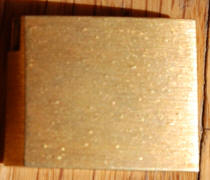
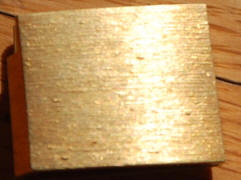
Gold Foil Habaki
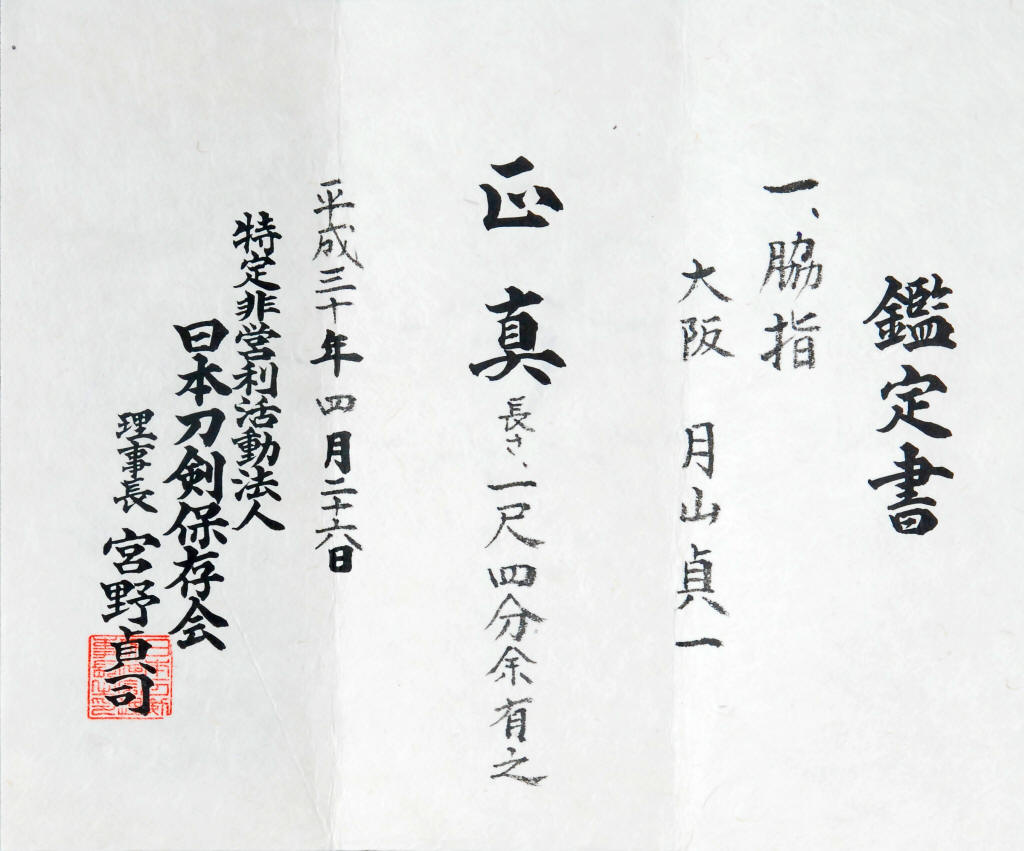
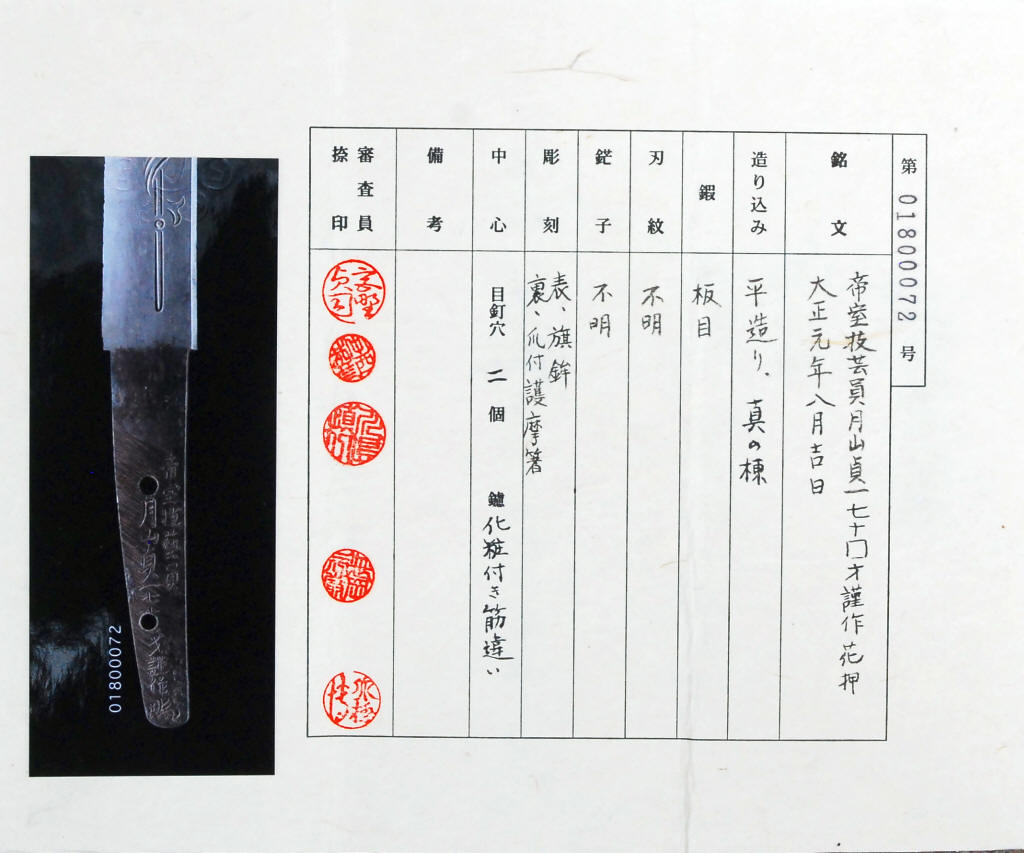
NTHK/NPO
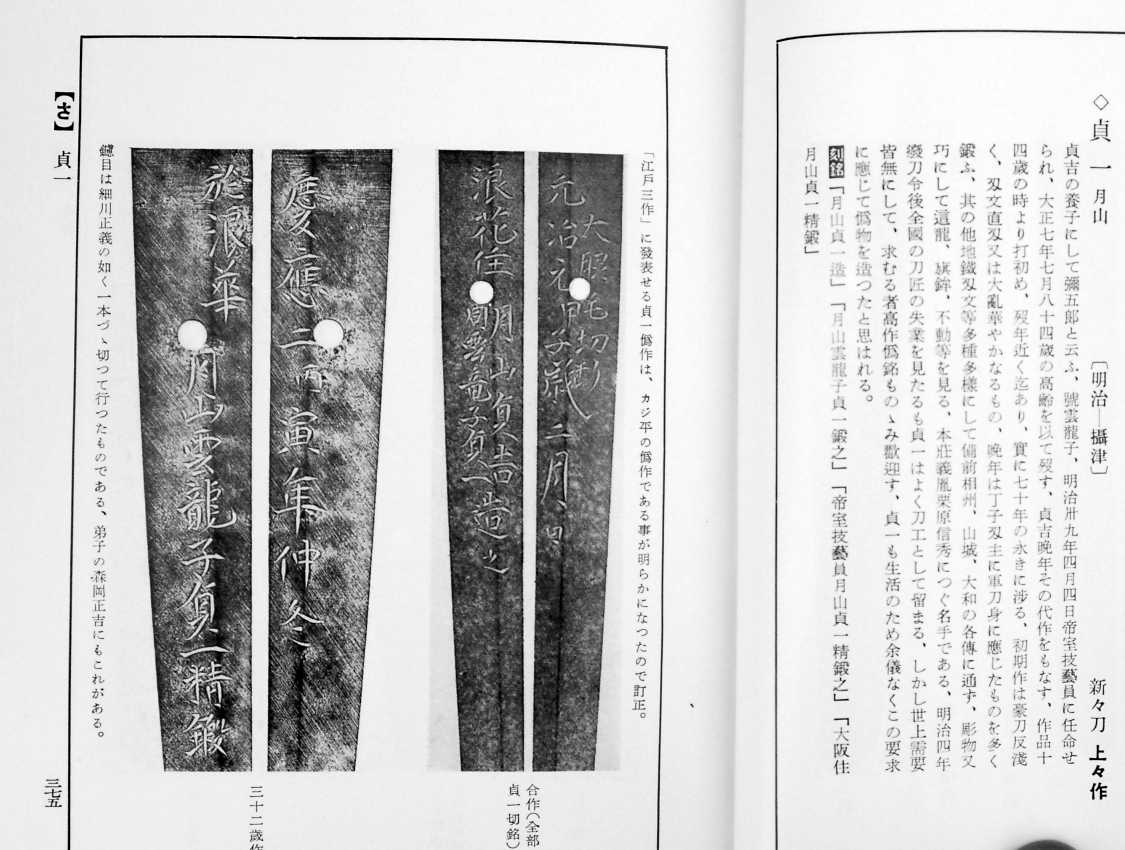

Nihon Toko Jiten - Shinto-hen
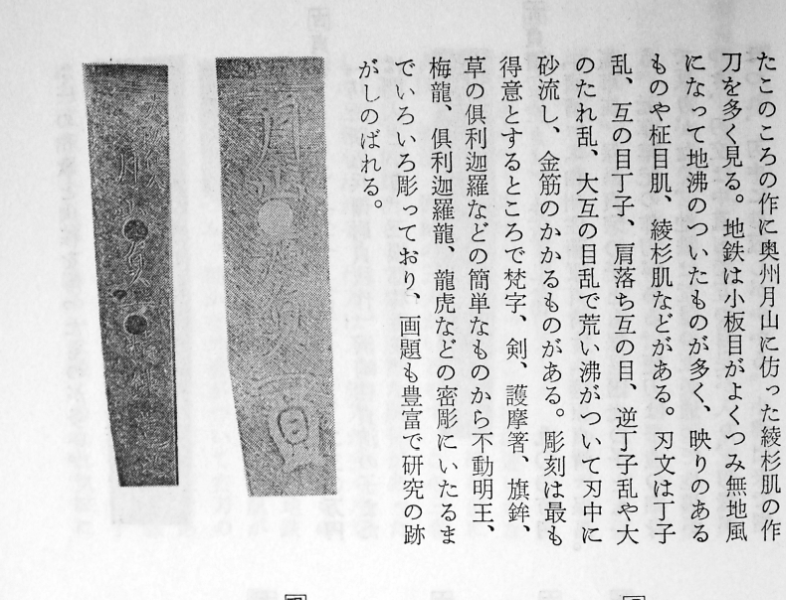
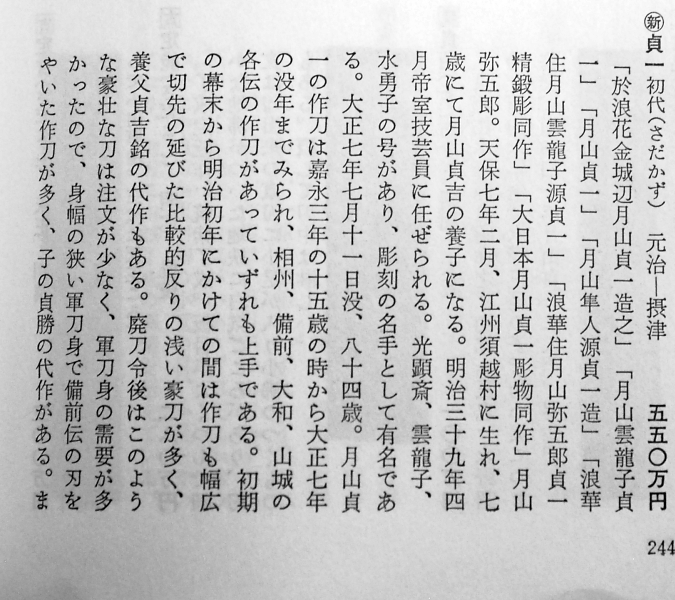

Toko Taikan
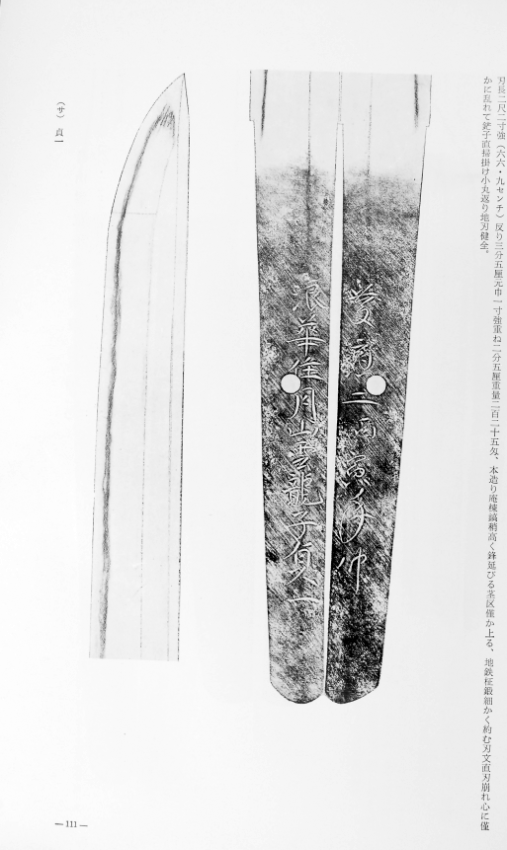
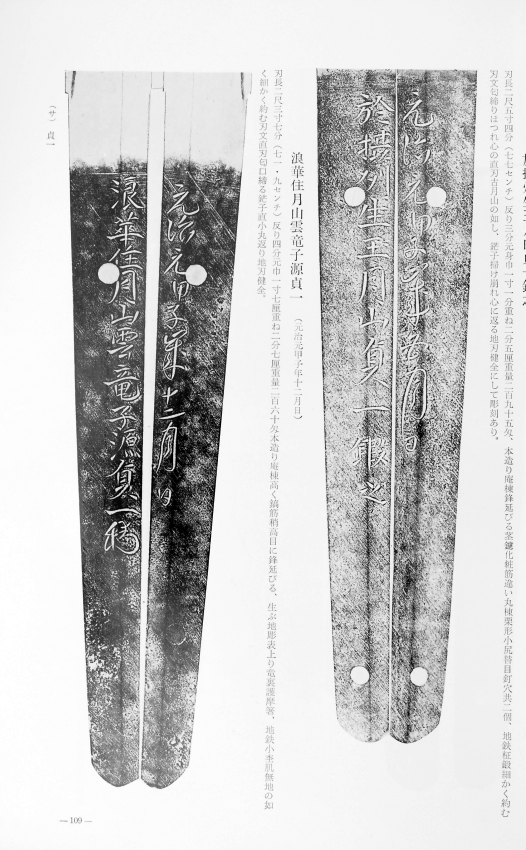
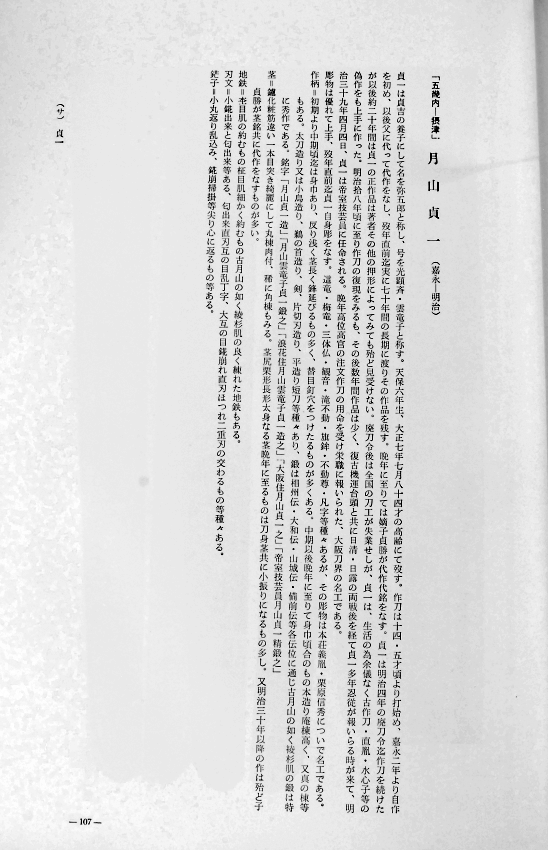

Shishinto Taikan,
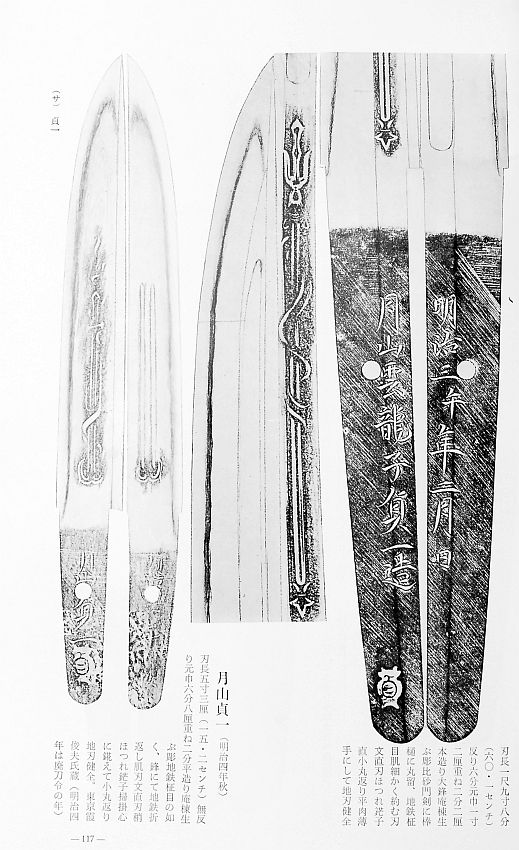
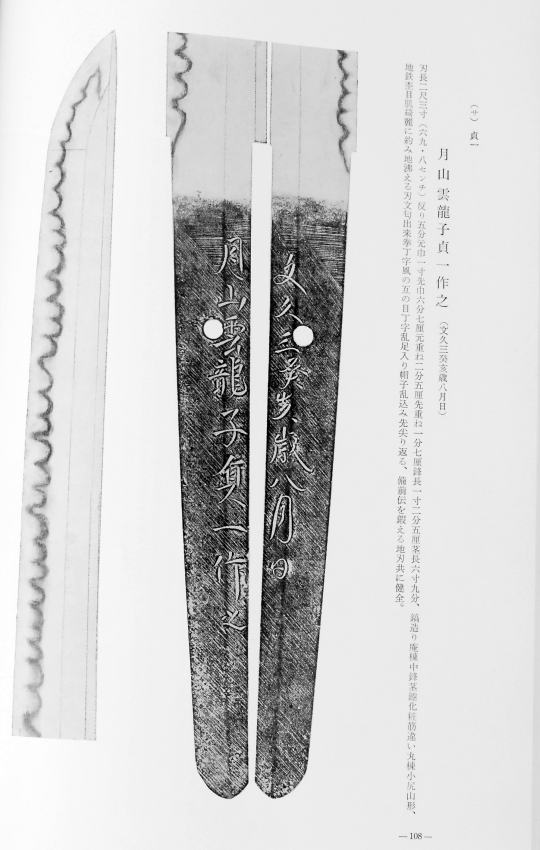
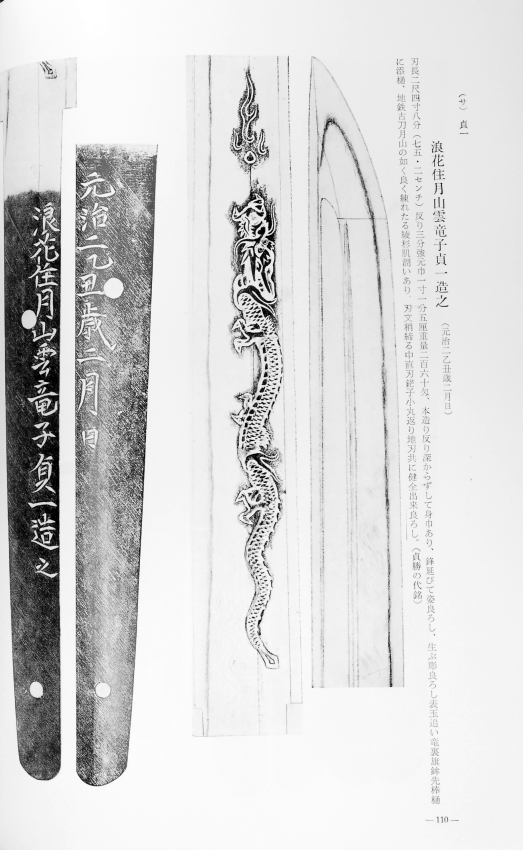
Shishinto Taikan,